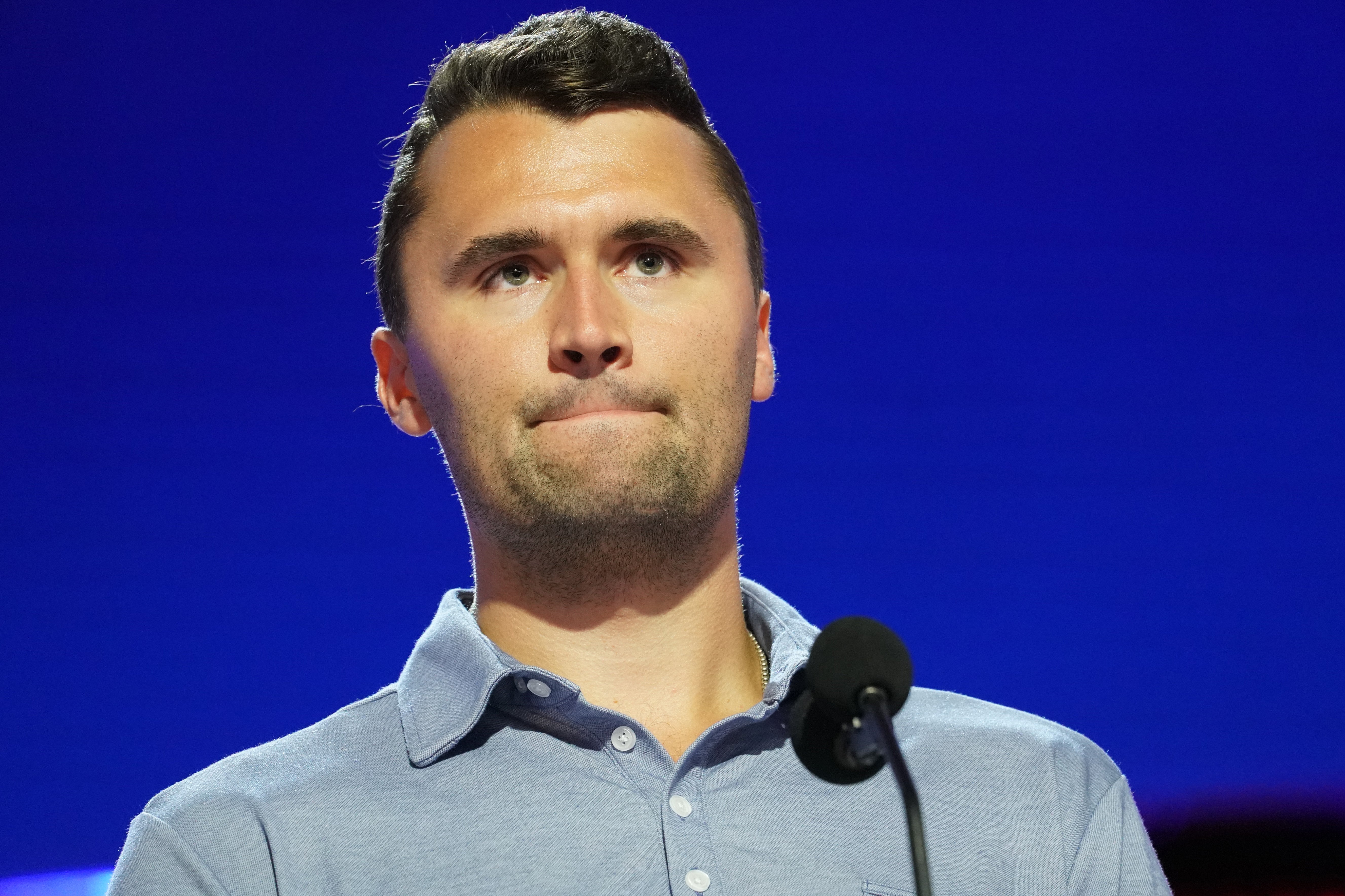Why Nick Fuentes, the far-right commentator and Charlie Kirk critic, issued a shocking warning after the assassination — Leaked video reveals a chilling message that has Twitter and social media in a frenzy
Why Nick Fuentes, the far-right commentator and Charlie Kirk critic, issued a shocking warning after the assassination — Leaked video reveals a chilling message that has Twitter and social media in a frenzy
The internet erupted yesterday as a previously unseen video surfaced showing far-right commentator Nick Fuentes issuing a shocking warning to his followers following the assassination of Charlie Kirk. Within hours, social media platforms were flooded with millions of views, reactions, and heated debates, making the clip one of the fastest-spreading pieces of content of the year.
The context of the message is as chilling as it is mysterious. In the video, Fuentes’s tone is tense, every word deliberate, every pause heavy with implication. “This isn’t what they want you to know,” he says, leaning closer to the camera, eyes locked on the lens. His followers reported feeling a mixture of fear and urgency. Some were shocked; others were skeptical, debating whether this was a political stunt or evidence of knowledge that the public had never been told.

The Content of the Leaked Message
While the full video has yet to be officially verified by independent sources, excerpts shared online provide a window into the unsettling nature of Fuentes’s warning. He reportedly references unseen events leading up to Charlie Kirk’s assassination, hinting at unseen figures, unusual behaviors, and decisions made behind the scenes.
What makes the message particularly alarming is its ambiguity. Fuentes doesn’t explicitly accuse anyone, but his phrasing implies that there are hidden forces at work. “You need to pay attention to the details they don’t want you to notice,” he reportedly says. This type of rhetoric has a double effect: it motivates his core supporters to investigate while simultaneously igniting suspicion and fear among the wider public.
Social media analysts note that this type of ambiguous warning can be incredibly viral. People are naturally drawn to mysteries, especially when they involve high-profile figures and alleged conspiracies. In this case, the combination of a violent public event, political undertones, and a cryptic warning creates a perfect storm for engagement.
Public Reaction: Shock, Skepticism, and Social Media Frenzy
Within minutes of the video leaking, hashtags related to Fuentes and Charlie Kirk were trending on Twitter. Millions of users began dissecting the clip, analyzing his gestures, pauses, and exact wording. Comment sections filled with speculation: some suggested that Fuentes might know more than he’s saying, while others claimed the warning was a performative stunt meant to energize his base.
A few posts even began cross-referencing the timing of the video with other events surrounding Charlie Kirk’s assassination, searching for patterns or hints that could corroborate Fuentes’s claims. The sheer speed and scale of this response underscore the power of social media in shaping public perception in real time.
Experts on media manipulation and political rhetoric were quick to weigh in. Dr. Linda Matthews, a professor of communications at Georgetown University, noted:
“This is a textbook example of how ambiguity in messaging drives engagement. Fuentes doesn’t need to provide concrete evidence. The mere suggestion of hidden knowledge creates speculation, encourages sharing, and fuels viral discussions. It’s a modern-day attention economy phenomenon.”

The Political Implications
The Charlie Kirk assassination was already a polarizing event, and Fuentes’s leaked warning has intensified the political debates surrounding it. Conservative circles have reacted with a mixture of fear and vigilance, while critics argue that the warning only serves to spread paranoia.
Political analysts suggest that Fuentes’s warning may influence ongoing investigations or public opinion. “Even without evidence, statements like this can create pressure on authorities to act faster or release information,” said Michael Tanner, a political strategist familiar with online campaigns.
The video has also rekindled conversations about security and social media influence. Experts argue that content like this, which teeters on the edge of incitement without directly encouraging illegal activity, highlights a gray area in content moderation. Platforms like Facebook and Twitter are now under scrutiny to determine how to handle viral material that is sensational but not verifiably false.
Historical Context: Public Figures and Cryptic Warnings
The use of cryptic, warning-style messaging is nothing new. Historical figures from both political and social spheres have used ambiguity to rally supporters or incite caution. In modern times, the effect is amplified by the immediacy of social media.
Fuentes’s video echoes this trend. By framing his message as a revelation while withholding key specifics, he ensures that followers remain engaged, speculating, and returning to his channels for updates. This strategy is particularly effective in the current media landscape, where short clips and rapid sharing dominate public attention.
Ethical Concerns and Public Responsibility
While the video is captivating, it also raises significant ethical questions. How responsible is it to issue a warning about a violent event without providing concrete evidence? Could this cause unnecessary panic or misinform millions of viewers?
Journalists and media ethicists have weighed in, emphasizing that public figures bear responsibility for the impact of their statements. Misinterpretation or over-speculation could inadvertently affect investigations or public safety.

What Comes Next?
At the moment, much about the leaked video remains unclear. Law enforcement agencies have not commented publicly, and Fuentes himself has not released any additional context. The clip continues to circulate, with millions of users watching, sharing, and debating every detail.
The question that hangs over the public conversation is simple yet profound: What does Fuentes know, and why has he chosen to reveal only part of the story?
Some believe that further leaks may emerge, potentially reshaping the narrative of Charlie Kirk’s assassination. Others argue that the warning is more about perception than reality, intended to maintain influence over followers.
Regardless of the truth, the impact of the video is undeniable. Social media is in uproar, the news cycle is dominated by discussion, and millions of Americans are questioning what they thought they knew about the events surrounding Charlie Kirk.
Conclusion: A Story That’s Far From Over
The leaked video of Nick Fuentes issuing a warning after Charlie Kirk’s assassination has captured public attention for all the right—and wrong—reasons. Ambiguous, tense, and unsettling, the clip embodies the modern power of social media: to spread fear, speculation, and conversation at an unprecedented scale.
Whether Fuentes is revealing hidden truths or strategically manipulating perception, the result is the same: a nation captivated, questioning, and eager to uncover what comes next.
As the story unfolds, one thing is clear: the Charlie Kirk case is far from over, and the leaked video has opened a new chapter that may define public understanding for months, if not years, to come.
The social media storm continues. Analysts, followers, and skeptics are all waiting for the next move, and the public is left with a simple but unnerving question: What is the truth behind the assassination, and how much do we still have to uncover?
The Unseen Story of the Bruce Springsteen Karoline Leavitt Clash

The Unseen Story of the Bruce Springsteen Karoline Leavitt Clash
In the sprawling, often chaotic landscape of the internet, stories can catch fire with breathtaking speed. They appear on our feeds, shared by friends and family, and quickly become part of the daily conversation. One such narrative that recently captured widespread attention was the purported on-air
Decoding the Virality: Why This Story Captured the Internet
The idea of a Bruce Springsteen Karoline Leavitt clash is potent because it taps directly into the cultural zeitgeist. It’s a perfect storm of celebrity, politics, and confrontation—three ingredients guaranteed to command attention online. To understand its appeal, we have to look beyond the surface-level drama and examine the psychological triggers that make such narratives so shareable.

The Power of Unlikely Pairings
At its core, the story presents an unexpected face-off. Bruce Springsteen, “The Boss,” is a cultural icon whose music has for decades been the soundtrack to blue-collar American life. His persona is one of authenticity, grit, and a deep connection to the nation’s heartland. On the other hand, Karoline Leavitt represents a new generation of conservative political communicators, known for her sharp rhetoric and staunch defense of her political allies. Placing these two figures in opposition creates an immediate sense of intrigue. It’s not a predictable political debate; it’s a culture clash personified. This kind of narrative, featuring what social media experts call a “character foil,” provides a simple, compelling framework for a complex discussion about America’s shifting values. The story writes itself, with clear protagonists and antagonists depending on one’s own worldview.
Tapping into Confirmation Bias
Viral online stories like this one often act as a mirror, reflecting our own pre-existing beliefs back at us. For those who admire Springsteen’s perceived everyman wisdom, the story of him delivering a “brutal truth” confirms their view of him as a moral authority. Conversely, for supporters of Leavitt, the narrative could be framed as a legacy artist attempting to silence a young, conservative voice, confirming their beliefs about establishment figures and media bias. This is the power of confirmation bias in action. The story doesn’t need to be meticulously factual to resonate; it just needs to feel true to what people already believe. Social media algorithms are designed to feed us content that aligns with our previous engagement, creating echo chambers where stories like the Springsteen-Leavitt clash can flourish without facing critical scrutiny.
The Rise of Political Celebrity Confrontations
The digital age has blurred the lines between entertainment and politics, giving rise to a new kind of public square where political celebrity confrontations are not only possible but expected. Celebrities have always had political opinions, but social media has given them a direct, unfiltered platform to engage with political figures and issues.
From the Stage to the Political Arena
Musicians, actors, and other public figures are increasingly leveraging their platforms to weigh in on current events. This shift has transformed them from mere entertainers into influential voices in the national dialogue. When an artist like Bruce Springsteen is depicted in a confrontation with a political operative like Karoline Leavitt, it symbolizes a broader trend of culture wars being fought in the public eye. These encounters are framed as battles for the soul of the country, making them incredibly compelling for audiences on both sides of the aisle. The perceived authenticity of a beloved artist clashing with the polished messaging of a political professional creates a narrative that is both relatable and dramatic, perfectly suited for the fast-paced nature of social media discourse.
Understanding the Echo Chamber Effect with Fabricated News
Social media platforms are designed to maximize engagement, and nothing engages like conflict. When a story detailing the Bruce Springsteen Karoline Leavitt clash begins to circulate, algorithms recognize its potential to generate clicks, comments, and shares. The platforms then push this content to more users who are likely to react, creating a feedback loop that can turn a spark of misinformation into a raging fire. This phenomenon of fabricated news spreading rapidly highlights a significant challenge in our information ecosystem. Users are often presented with headlines and snippets that confirm their biases, and the speed of sharing often outpaces the process of verification. As a result, the emotional impact of the story becomes more important than its factual accuracy.
Navigating a World of Viral Narratives
In an environment where compelling stories can easily overshadow verified facts, developing media literacy is more crucial than ever. Learning to distinguish between credible reporting and engaging fiction is an essential skill for any responsible digital citizen.
How to Spot the Red Flags
There are often telltale signs that a story might not be what it seems. Sensational headlines that promise “brutal truths” or “stunned silence” are a common red flag. These emotionally charged phrases are designed to provoke a reaction, not to inform. It’s also wise to check the source of the information. Is it a reputable news organization with a history of journalistic standards, or is it an unfamiliar website with a strange URL? A quick search for other outlets reporting on the same event can often reveal whether the story is legitimate or an isolated piece of fabricated news. Taking a moment to pause and verify before sharing can go a long way in curbing the spread of misinformation.
The Real Impact of Fictional Clashes
It might be tempting to dismiss stories like the supposed Bruce Springsteen Karoline Leavitt clash as harmless entertainment. However, these narratives can have a real-world impact. They deepen political polarization by reinforcing negative stereotypes about the “other side.” They erode trust in legitimate media institutions by blurring the line between fact and fiction. And they create a more toxic and divided social media discourse, where outrage is valued more than understanding. The fictional confrontation becomes a proxy for real-world resentments, making constructive dialogue even more difficult.
In conclusion, the viral sensation surrounding the Bruce Springsteen Karoline Leavitt clash serves as a powerful reminder of the complexities of our modern information age. While the event itself may be a product of digital imagination, its journey across our screens tells a very real story about the mechanics of virality, the allure of conflict, and the deep-seated divisions that define our current cultural moment. It highlights how effectively narratives—whether true or false—can tap into our emotions and biases, shaping our perceptions and fueling our conversations. As we continue to navigate a world saturated with information, the enduring lesson from this episode is the importance of critical thinking. By questioning what we see, verifying our sources, and understanding the powerful forces that shape our online experiences, we can become more discerning consumers of media and more responsible participants in the global conversation.





